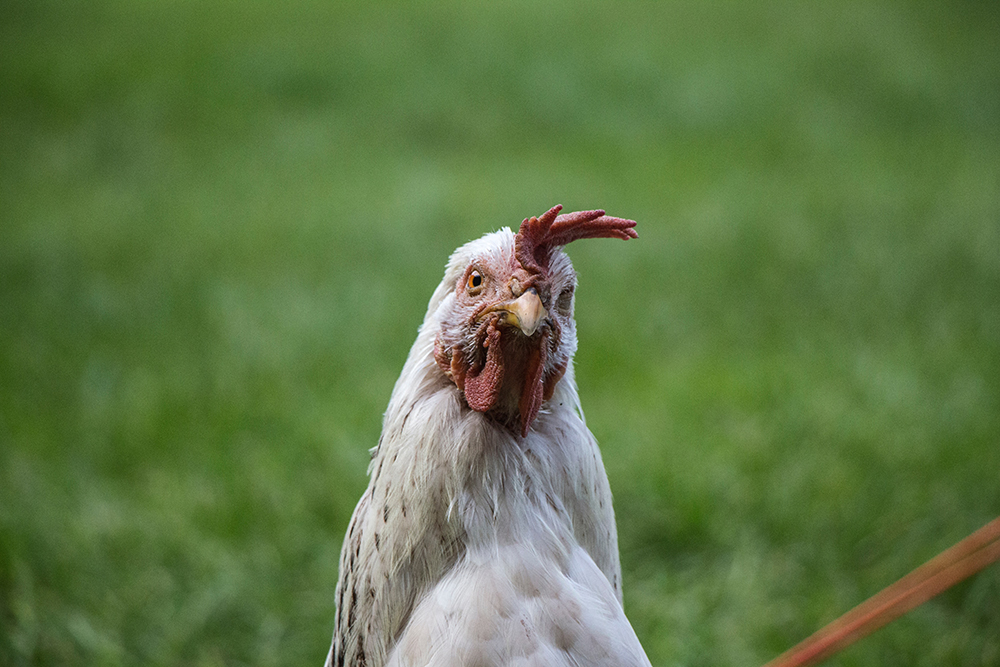
“These graham crackers are artisan baked from local cage-free monks in Tibet.”
“We enjoyNon-GMO, cold brewed chocolate rice milk, hand milked by fair trade farmers”
You know those parents; you might even be one of those parents? Talking about their family’s specially researched physical diet. What if the same passion and dedication that was put toward our children’s physical life was balanced out and applied to their mental, emotional, and even spiritual health life as well?
I live in the heart of Amish country Pennsylvania, so it is a pretty regular site for our family to drive past a farm and see chickens in a front yard wandering “free-range.” Here is a little secret, that will crush a few fans of free-range chickens: the chickens do not wander around free at night, they are put into a barn, chicken house or a large cage. It is for their safety from foxes, weasels and other things that like the taste of grain-fed, free-range chicken wings! It is about keeping the chickens safe.
There are two very big extremes in parenting, completely caged or totally free-range children. We know those kids that are free to wander and go completely free-range. We also know those kids that have been caged up by over-protective and helicopter parents. (You did hear me mention I live in Amish Pennsylvania?)
It comes down to balance, knowing that at every stage of your child’s development they need to be allowed to take risks and see the rewards of those risks. It is part of a learning process. We can give our children space to wander around the old barnyard and tasting a little of this and that of life, while we also keeping a watchful eye on them.
It comes down to balancing between caging up our little egg-heads and raising a bunch of free-range wild little chicks?
So, how free is free? Like the popular bumper sticker, “Freedom isn’t Free”, freedom in our country and in your home, is earned. While we like to say that freedom is a right, actually it is more like a privilege. In your home for sure, it needs to be an earned privilege.
Also, like the so-called “free-range” chickens, our children must be taught and trained. They do not naturally know what is dangerous and what is not. Without some training and love they will easily wander out in the middle of the road of our culture.
Every home is different and each parent must decide the levels of freedom they give each child. Here are some thoughts to get your family started in helping your child to learn and earn freedom.
- Going Organic – You have natural, organic moments to allow your children to grow big and strong. In our home, we have used organic moments like these:
- Staying home alone for the first time while we ran errands. It was a great way to start to build trust in our children. Before letting them out on their own, we allowed them to show they could handle being in, on their own.
- Being allowed to attend a sleepover. This was a wonderful way to talk through our expectations and limits, to get them ready for longer times away.
- Attending church-based children and youth ministry events. This was a perfect way to learn and earn freedom with people we could trust.
- Extending trust to make a decision by themselves. No, not every decision. But slowly extending them the freedom to make decisions and learn from them.
Each one of moments like these offered us natural, home-grown safe moments to organically talk and teach, through our children’s successes and the failures.
- Training Cage Fighters – Seeking independence and freedom is a normal natural part of development, don’t fight it. It is hard to let go of your children, but you need to understand it is a moment for you to live in faith not in fear. Like any healthy little chick, your children are going to fight their way out of the protective shell you have created for them. It is okay. It is natural. It’s part of getting them ready to be independent adults. Getting our children ready for freedom, we established larger and larger “cages” of freedom by creating and communicating our rules and expectations that they could lean against. Here are few things to consider as you create your own rules and expectations.
-
- Each age level and maturity level should come with a new set of rules and freedoms.
- Rules should be realistic, based on your home and community. The rules and expectations for one family, may not be the same as another. Just because “Jimmy is allowed to…” doesn’t mean you have to allow it.
- Rules and responsibility go hand in hand. As your child successfully obeys your rules and lives up to expectations, the fences get wider and wider.
-
We all know those kids that are completely free-range and wild. We also know those kids that have been caged in by hovering parents. We also know how both of those stories end. More often than not, they end up a pile of feathers in the middle of the road of our culture.
Take the time like we have, to do the research and look around to make the best choices for your family to find the right healthy balance of faith and freedom!
Dan Istvanik
DAN ISTVANIK is a Middle Years pastor in Lancaster, PA. He is a speaker, ministry coach and writer who has been working in youth ministry for over 20 years. Dan shares daily middle year ministry specific resources and hints on his site “The Middle Years” at MiddleYearsMinistry.com



